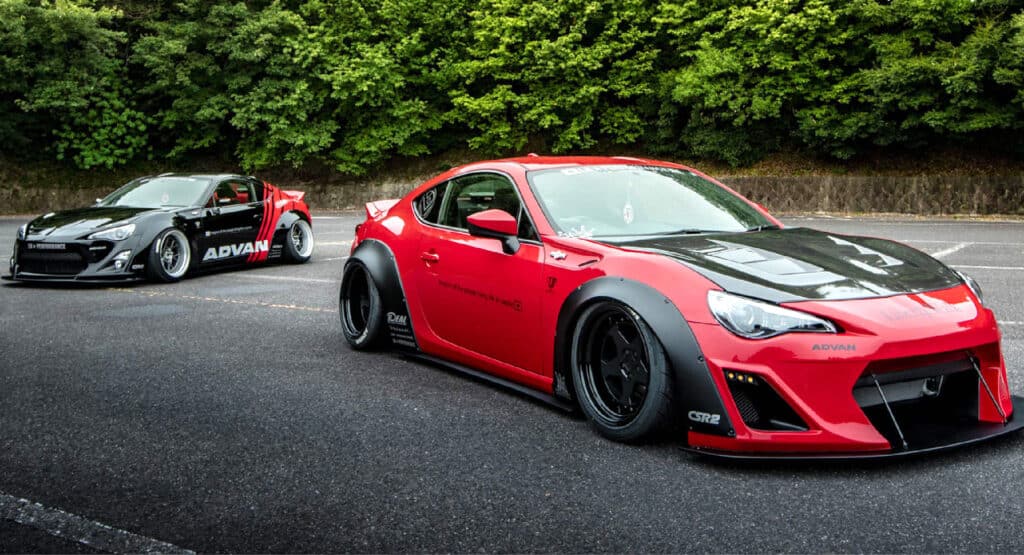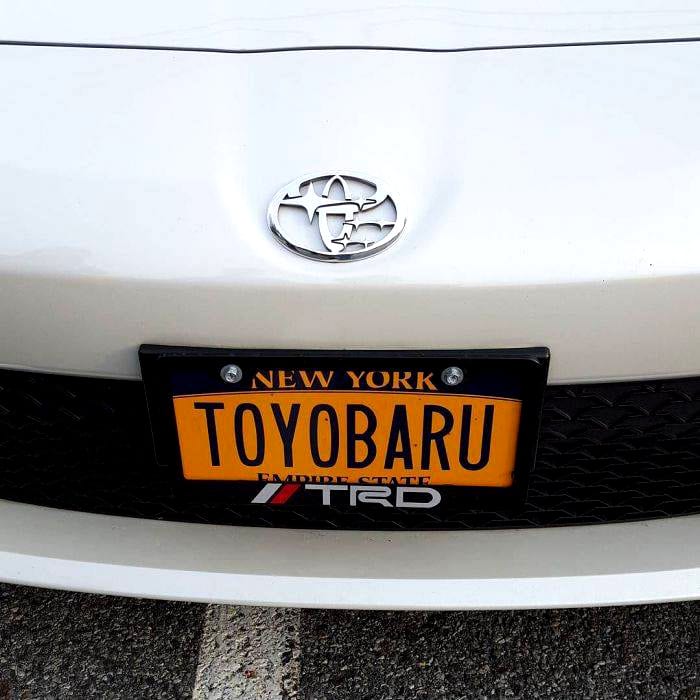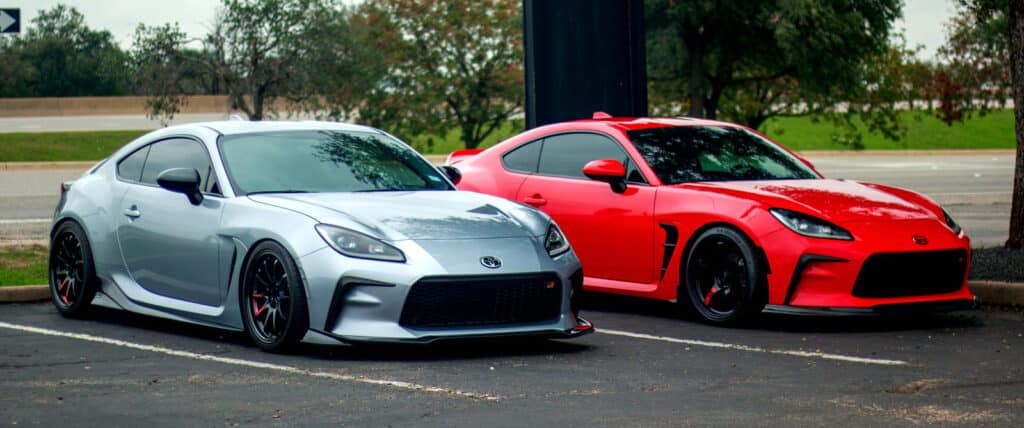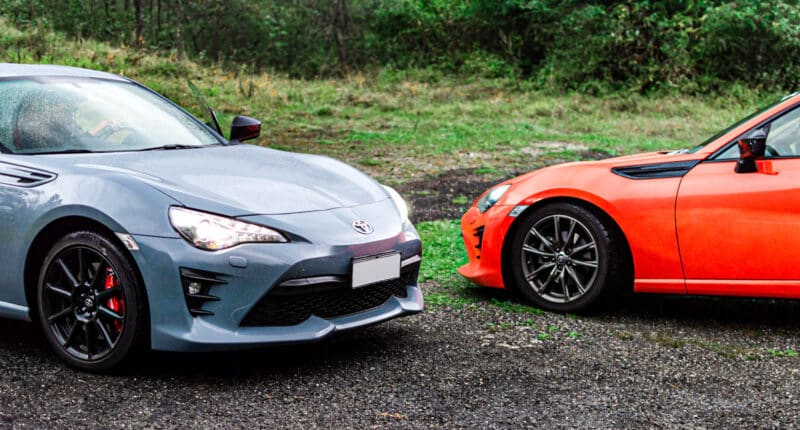Automakers often collaborate to develop platforms together for several reasons, like reducing overhead expenses, speeding up market entry, and leverage expertise.
The most infamous platform-sharing example is the Toyota GR Supra (MK-V), and the BMW Z4 manufactured on the BMW CLAR platform.
On the other end of the spectrum are the ZN6 and ZC6-based Toyobaru triplets—perhaps the most cherished joint-platform trio in the tuner car scene.
By “triplets,” we mean fraternal, not identical. While the Scion FR-S and Subaru BRZ are largely the same in terms of core mechanical components, there are some differences in the way they look and drive.
In this article, we’ll give you a more detailed breakdown of the mechanical differences between the two.
Mechanical Differences Explained
The Scion FR-S and Subaru BRZ are practically the same, including everything from the 2.0L boxer engine, to the chassis, and even the bodywork (most of it, anyway).
However, there are subtle differences in some of their unsprung components, which consequently affect their handling characteristics.

Remember, the placebo effect is powerful. It’s not uncommon for people to have contrasting opinions on how the two cars handle, but when looked at objectively, the differences in suspension components really do give each car its distinctive feel.
Here’s what’s different.
Spring Rates
Early models of the FR-S (before the Toyota 86 rebrand) used slightly stiffer spring rates compared to the BRZ.
| Front | Rear | |
|---|---|---|
| Subaru BRZ | 27 N/mm (153 lbs/in) | 34 N/mm (195 lbs/in) |
| Scion FR-S | 23 N/mm (131 lbs/in) | 37 N/mm (211 lbs/in) |
The Subie focuses more on comfort with its understeer-biased setup aimed at everyday usability while still being fun to drive.
Conversely, the FR-S is tuned to be a bit more track-happy, with a more neutral-to-oversteer bias, giving it a slightly sharper and more “playful” feel on the limit.
It seems to have a more direct, sharper steering feel and can be a little twitchier than the BRZ when pushed hard.
Damping
Both the FR-S and BRZ use MacPherson struts in the front and double wishbones in the rear, which is a key part of their shared platform. However, there are small differences in the way their dampers (shock absorbers) are tuned.
The FR-S has firmer damping to complement its stiffer springs while Subaru’s engineers opted for slightly softer damping, aiming for a cushier ride.
Sway Bars
Back when it was still in production, the Scion FR-S could be purchased with dealer installed performance options such as larger sway bars that measured 20.6 mm front and 15.8 mm rear.
The stock anti-roll bars measured at 18 mm front and 14 mm rear. The BRZ didn’t have these options. If you’re in the market for a used FR-S, check if the owner got the performance package.
Other Misc Differences

There’s more. The FR-S is slightly lighter, weighing 6 lbs less in the manual and 18 lbs less in the automatic version. It also has a better drag coefficient: 0.27 with the spoiler and 0.29 without it, compared to the BRZ’s 0.29 (no spoiler).
The FR-S also came with a TRD air intake kit and exhaust option, which had a 3.6 inch larger outer diameter compared to that of the BRZ.
The BRZ got optional upgrades too, like the STI wheels, for instance. These rims are about 3 lbs lighter than the FR-S’s standard 17″ alloys (38.4 lbs vs 41.2 lbs). Any reduction in unsprung masses, especially those affected by rotational inertia, is a win.
Lastly, the BRZ has a slightly smaller turning circle, but this might be due to how it’s measured, as both cars share the same steering system.
Who Builds What?

If you’ve ever wondered who’s behind the GT86/GR86, BRZ, and FR-S, here’s the scoop: Toyota doesn’t manufacture these cars in their own factories. Instead, Subaru handles all the production at their Gunma assembly plant in Japan.
From the first generation—whether it’s the Toyota GT86, Scion FR-S, or Subaru BRZ—all units rolled off the same Subaru-owned production line.
This continues with the latest GR86 and BRZ models, which are still built under the same roof, by the same skilled Subaru workers.
While Toyota and Subaru share the core platform, each brand tweaks the details to make their version unique.
For example, the new GR86 and BRZ feature distinct suspension and throttle tuning, along with slight variations like steering knuckles and rear sway bar mounts.
But underneath it all, these “twins” are essentially the same car, assembled with identical precision in Subaru’s plant.
Which Should You Choose?

The BRZ and FR-S (or GT86) cater to slightly different priorities. The BRZ leans toward being a comfortable grand tourer, offering more upscale interior options and softer suspension, making it better suited for daily driving.
In contrast, the FR-S seems to be more of a weekend car, with firmer suspension, making it ideal for track days and spirited canyon drives. This makes sense because the Scion brand was originally aimed at a younger demographic.
If you’re choosing between the two, here’s a general rule: manual transmission? Go with the FR-S. Its rawer setup is better for enthusiasts who prioritize performance over comfort. Automatic transmission? Opt for the BRZ.
Its additional creature comforts, like a more refined interior and extra features, make it a better fit for those who prefer convenience and luxury.
Ultimately, your choice depends on how you plan to use the car—track days or daily commutes.
If you’re going to modify the suspension by installing lowering springs or coilovers, maybe aftermarket sway bars, then the stock suspension tuning won’t matter anyway.
Did we miss anything? If you’ve spotted a lesser-known mechanical difference between the two cars, let the world know by leaving a comment below!

